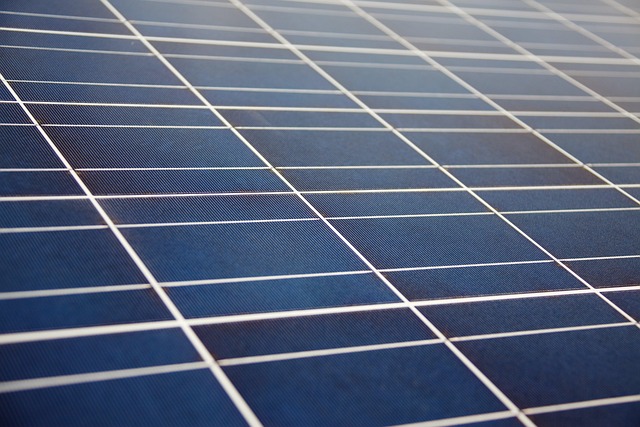
How Clean Energy Is Empowering Local Communities
In recent years, the emergence of clean energy technologies has started to revolutionize the way local communities generate and use energy. As the world increasingly focuses on sustainability and reducing carbon emissions, clean energy—derived from renewable sources like solar, wind, hydro, and geothermal—not only helps protect the environment but also significantly benefits local economies and communities. This article explores how clean energy is empowering local communities through job creation, economic stability, health benefits, energy independence, and community engagement.
Job Creation and Economic Growth
One of the most significant benefits of clean energy is its potential to create jobs within local communities. As renewable energy projects expand, they require a diverse workforce, encompassing roles in manufacturing, installation, operation, and maintenance. According to a report by the International Renewable Energy Agency (IRENA), renewable energy employment surpassed 11 million jobs globally in 2018, with many of these positions being created within local economies.
In addition to directly generating jobs, clean energy projects stimulate local economies. The construction of solar farms, wind turbines, or bioenergy facilities necessitates local suppliers for materials and services. This creates a ripple effect whereby jobs are created not only in clean energy sectors but also in related industries like construction, logistics, and manufacturing.
Moreover, by investing in local clean energy initiatives, communities can bolster their economic resilience. Renewable energy projects can decrease dependence on imported fossil fuels, leading to more stable and predictable energy prices. Local energy sources help communities sidestep the volatility that characterizes global energy markets, promoting economic stability and growth.
Environmental and Health Benefits
Clean energy plays a crucial role in reducing greenhouse gas emissions and air pollution, resulting in significant environmental and health benefits for local communities. Traditional energy sources, particularly fossil fuels, have been linked to numerous health problems, including respiratory issues, cardiovascular diseases, and increased mortality rates. Transitioning to clean energy minimizes these risks by reducing harmful emissions.
For instance, studies show that regions that invest in renewable energy sources experience lower levels of air pollutants, which in turn results in lower healthcare costs for local populations. Communities that embrace clean energy not only improve public health but also reduce the burden on healthcare systems, allowing funds to be redirected toward other essential services.
Energy Independence and Security
Energy independence is a crucial advantage for local communities adopting clean energy technologies. By harnessing local renewable energy resources, communities can produce their energy, reducing reliance on external sources that often fluctuate in availability and price. Energy independence minimizes vulnerability to global market ups and downs, geopolitical conflicts, and other factors that can disrupt energy supplies.
Furthermore, localized energy production enhances energy security. Distributed energy systems, such as rooftop solar panels or community wind projects, are less susceptible to large-scale blackouts or disruptions in power supply. This resilience not only benefits individual households but also strengthens the overall stability of the community’s power grid.
Community Engagement and Empowerment
Clean energy initiatives can empower local communities by fostering a sense of ownership and involvement. When residents participate in developing renewable energy projects—whether through community solar programs, cooperative ownership models, or local renewable energy associations—they gain a sense of agency over their energy future.
By involving community members in decision-making processes, clean energy projects encourage civic engagement and strengthen social ties. Residents become informed about energy issues, which can lead to grassroots advocacy for further sustainability initiatives. This empowerment can also extend to education and skill-building, as workshops and training programs surrounding clean energy technologies create informed citizens ready to take action.
Case Studies of Clean Energy Empowering Local Communities
To illustrate the potential of clean energy to empower local communities, several successful case studies can be examined. These examples demonstrate varied approaches to clean energy implementation and highlight the social, environmental, and economic impacts of such initiatives.
The Bronx, New York: Community Solar Development
The Bronx has faced significant energy challenges, including high electricity costs and reliance on imported fossil fuels. A series of community solar projects launched in the area have enabled local residents to subscribe to renewable energy systems without installing their solar panels. This initiative has primarily benefited low-income households, offering them an affordable energy alternative while reducing their carbon footprint.
Gonzalez, Texas: Wind Energy Growth
Gonzalez, a small town in Texas, has embraced wind energy as a pathway toward economic revitalization. The establishment of a wind farm has created numerous jobs during both the construction and operational phases. Local workers received training for roles in energy production and maintenance, lowering the unemployment rate and fostering economic development in the area.
Freiburg, Germany: A Model for Sustainable Urban Living
Freiburg is often referred to as the “Solar City” for its ambitious commitment to clean energy. The city has integrated extensive solar infrastructure into its urban planning, transitioning to renewable energy sources for its public services, transportation, and housing developments. Freiburg demonstrates how community-driven clean energy initiatives can lead to enhanced quality of life, reduced environmental impact, and strong local economies.
Barriers and Challenges Ahead
Despite the positive narratives surrounding clean energy, various challenges and barriers need to be addressed to maximize its impact on local communities. Financial constraints, regulatory hurdles, and social equity concerns often hinder the widespread adoption of renewable technologies.
Many communities, particularly those in low-income or marginalized areas, may struggle to finance clean energy projects. While federal and state incentives can help, upfront costs remain a barrier. Innovative financing options, such as community development financial institutions (CDFIs), could play a critical role in addressing these obstacles.
Moreover, local governments sometimes lack the necessary policies or regulatory frameworks to support clean energy development. Collaboration among stakeholders—including local governments, community organizations, and private entities—is vital to create conducive environments for renewable energy projects.
The Future of Clean Energy in Local Communities
Looking ahead, the role of clean energy in empowering local communities is likely to expand. Emerging technologies, including energy storage systems and smart grid innovations, will enhance the efficiency and reliability of renewable energy sources, further benefiting communities. Continued investments in education and workforce development in the clean energy sector can help ensure that local populations are well-prepared for the jobs of the future.
As community attitudes toward sustainability shift, grassroots support for renewable initiatives will likely grow. The convergence of technology, policy, and community engagement will undoubtedly redefine the energy landscape, paving the way for a cleaner, more equitable energy future.
Conclusion
Clean energy is not merely about transitioning to sustainable power sources; it is also about empowering local communities. Through job creation, economic stability, improved health outcomes, energy independence, and enhanced community engagement, clean energy initiatives can serve as a catalyst for positive change. By addressing challenges and embracing innovative solutions, communities can harness the full potential of clean energy to build resilient, sustainable futures.



